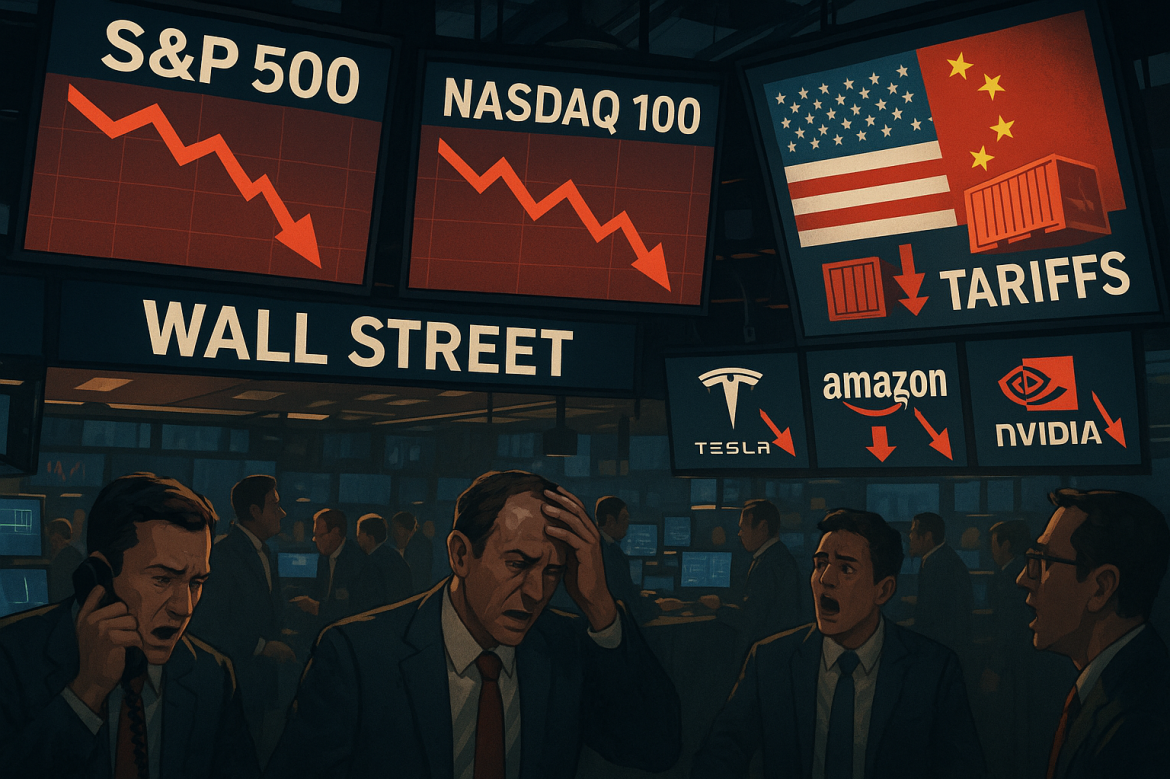
Wall Street sinks after Trump tariff threats, S&P, Nasdaq, Nvidia and Tesla plunge
US markets fell hard on Friday after President Donald Trump threatened to impose a “massive increase of tariffs on Chinese products,” reigniting investor concerns about a renewed US-China trade conflict.
The comments triggered a broad market selloff, erasing early gains and sending major stock indexes sharply lower.
Stocks reverse gains as trade tensions resurface
The S&P 500 Index fell 2% as of early afternoon in New York, putting the benchmark on track to wipe out its weekly advance and notch its steepest one-day decline since April 21.
The Nasdaq 100 Index dropped 2.7%, heading for its first decline of at least 2% in nearly six months.
At the time of writing, the S&P 500 was trading down 1.9% while Nasdaq 100 was in the red by 2.5%.
Technology shares, which have powered much of the market’s gains this year, were among the hardest hit.
The group known as the “Magnificent Seven” — which includes Tesla Inc. and Amazon.com Inc. — slumped more than 3%.
Nvidia shares were down 2.6%.
Losses in these large-cap growth stocks weighed heavily on broader indexes and underscored the fragility of investor sentiment tied to geopolitical developments.
The sharp reversal followed Trump’s remarks that the US is considering new trade measures against China, citing what he described as “hostile” export controls on rare-earth minerals.
Trump said he saw “no reason” to meet with Chinese President Xi Jinping and that an increase in tariffs on Chinese imports was among several potential countermeasures under review.
Volatility spikes as investors shift to defensive plays
The president’s comments swiftly unsettled markets, pushing the Cboe Volatility Index (VIX) — Wall Street’s primary fear gauge — above 20 for the first time in more than two months.
A reading above that level typically signals elevated market stress and uncertainty among investors.
Ten of the 11 major sectors in the S&P 500 traded lower, with technology leading the declines.
In contrast, consumer staples, a sector often viewed as a defensive haven during market turbulence, moved higher.
Companies in these sector typically have stable earnings, lower valuations, and reliable dividends, characteristics that appeal to investors seeking safety amid volatility.
The downturn highlights how quickly sentiment can shift in the face of geopolitical developments.
After months of relatively steady gains and low volatility, investors are once again grappling with the potential economic fallout of escalating trade tensions between the world’s two largest economies.
Company movers: Mosaic, Qualcomm, and PepsiCo stand out
Amid the broader selloff, individual stocks saw notable swings. Mosaic Co. was the day’s biggest decliner in the S&P 500, plunging 8.4% after the fertilizer producer reported that its third-quarter phosphate production fell short of management’s expectations.
The company attributed the shortfall to mechanical issues at one facility and utility interruptions at another.
Qualcomm Inc. fell 5.1% after reports emerged of a new antitrust investigation in China related to its planned takeover of connected-vehicle technology provider Autotalks.
On the upside, Applied Digital surged 19% after announcing that it is in advanced talks with a hyperscaler client regarding its second data center campus in North Dakota.
Meanwhile, PepsiCo Inc. gained 3.4%, making it the best-performing stock in the S&P 500 on the day.
As investors digest Trump’s latest comments and assess the potential for further policy actions, markets appear to be entering a more volatile phase — one defined by renewed trade uncertainty and a cautious shift toward safer assets.
The post Wall Street sinks after Trump tariff threats, S&P, Nasdaq, Nvidia and Tesla plunge appeared first on Invezz
